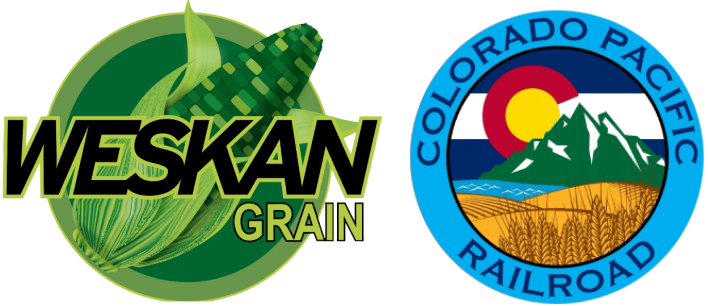
16 Oct The Latest Grain Technology
The Latest Grain Technology
The grain industry, foundational to global food supply, is not one to remain stagnant. Over the years, it has shown a remarkable ability to adapt and evolve, responding to changing demands, environmental challenges, and the need for efficiency.
This dynamism is particularly evident in the rapid technological advancements that have graced the sector in recent times. From automated harvesting tools to advanced grain drying systems, these innovations are revolutionizing the way farmers plant, nurture, and harvest their crops.
Leading the charge in embracing these new grain technologies is the Soloviev Group. Under the guidance and vision of Stefan Soloviev, the group has been at the forefront of adopting and promoting advanced grain technologies. Their commitment to innovation is evident in their farming practices, storage facilities, and market strategies.
As we delve deeper into this article, we’ll explore these state-of-the-art technologies, shedding light on how they stand to reshape the future of grain farming and benefit both the producers and consumers alike.
Historical Context of Grain Technology
The journey of grain technology has been both vast and transformative. In ancient times, farming was entirely dependent on manual labor, simple tools, and the farmer’s intuition. But as societies evolved, so did the techniques of grain cultivation and storage. A significant shift was witnessed during the Industrial Revolution in the 18th century, where machines began to replace manual labor for tasks such as threshing.
The 20th century brought about the Green Revolution, which introduced high-yielding varieties of grains and led to an exponential increase in grain production.
These technological evolutions were crucial. As the global population expanded, the demand for food grew, and technology became the fulcrum that balanced this increasing demand with supply. Innovations like the combine harvester streamlined the harvesting process, while developments in storage technology minimized post-harvest losses.
Latest Grain Technologies
One of the most transformative tools in this journey has been grain drying technology. Grain drying is the process of reducing the moisture content in grains, ensuring they are stored without the threat of spoilage. It’s crucial, especially in regions where unpredictable weather can leave crops wetter than desired at harvest time. The right moisture level not only preserves the grain but also maximizes its market value.
However, drying is just one part of the equation. While grain drying focuses on moisture removal, grain conditioning is a broader term that encompasses measures to maintain and even enhance grain quality post-harvest. This can include controlling the temperature, moisture, and even the airflow around stored grain. By doing so, it ensures that the grain remains in a state that’s ideal for long-term storage, reducing losses and upholding quality standards. The distinction between drying and conditioning is essential, as it underscores the comprehensive approach to grain management that modern technologies facilitate.
But the innovation doesn’t stop there. Today’s grain industry is also seeing the rise of precision agriculture tools, using data analytics and GPS technology for optimal planting and harvesting. Automated grain measuring devices, remote monitoring systems, and even drones are being employed to survey fields and monitor crop health from a bird’s eye view.
Environmental Benefits of Modern Tech:
One of the most pressing issues of our times is the environmental impact of industries, and agriculture is no exception. However, modern grain technology is stepping up to address these challenges. Sustainable farming practices, bolstered by technology, are now becoming the norm rather than the exception. Precision farming, for instance, ensures that resources like water and fertilizers are used optimally, reducing wastage.
Moreover, tech solutions are actively helping reduce the carbon footprint of grain farming. Energy-efficient machines, solar-powered farm equipment, and bio-degradable storage solutions are just a few examples of how technology is making grain farming greener. The use of digital tools to monitor soil health ensures that the land is not over-farmed, maintaining its fertility for future generations.
Grain technology, with its roots in ancient practices, has come a long way. It has successfully integrated the power of AI and automation to ensure efficiency and yield optimization. As the world grapples with climate change, it is heartening to see that this technology is also contributing to creating a sustainable and eco-friendly grain farming ecosystem.
Stefan Soloviev’s emphasis on integrating technology with traditional farming methods has not only optimized grain yield and quality for the group but has also set a precedent for other industry players to follow. Such industry leaders underscore the importance of continuously adapting to and investing in the latest tech trends for sustainable and profitable grain farming
Benefits of Modern Grain Technologies
The mix of farming and new technology has brought big changes to the grain industry. These changes have brought many benefits to how we farm and handle grain.
Improving Grain Quality: Good grain is more than just how it looks; it’s about keeping its healthy parts. New tools, like grain conditioning equipment, make sure grains are kept in the best way to stay fresh and healthy. These tools control dampness and temperature, so grains stay fresh and safe from damage for a long time.
Enhancing Grain Yield: Modern tools help from the start to the end of farming. With the help of new tech and GPS, farmers plant seeds in the best way and pick crops at the right time. This careful way of farming makes sure they get the most out of the land, leading to more grain.
Financial Gains: Better quality and more grain mean more money. Also, some tech tools help farmers see and guess the best times to sell their grain. This means they can sell when prices are high. Over time, this can mean a lot more money for farmers.
Reduction in Waste: A big win of new grain tools is less waste. Better storage, checking grain conditions quickly, and fast actions make sure problems like bugs or bad conditions are spotted and fixed fast. This means less grain is thrown away, saving food and money.
In short, new grain tools help farmers in many ways. They make sure grain is of the best quality, there’s more of it, and less is wasted. For farmers, these tools are very important in today’s world.
Conclusion
The grain industry is always on the move, with fresh ideas and tools coming to the front. This continuous change is not just for show. It’s a real boost to how grain is grown, stored, and sold. Embracing new tech can help farmers get better grain, more of it, and at a better price. It’s clear: to get the best out of their farms, farmers should keep an eye on the newest tech trends. So, for all the farmers out there, dive into the new age of grain farming. The rewards, in both quality and cash, are waiting!


